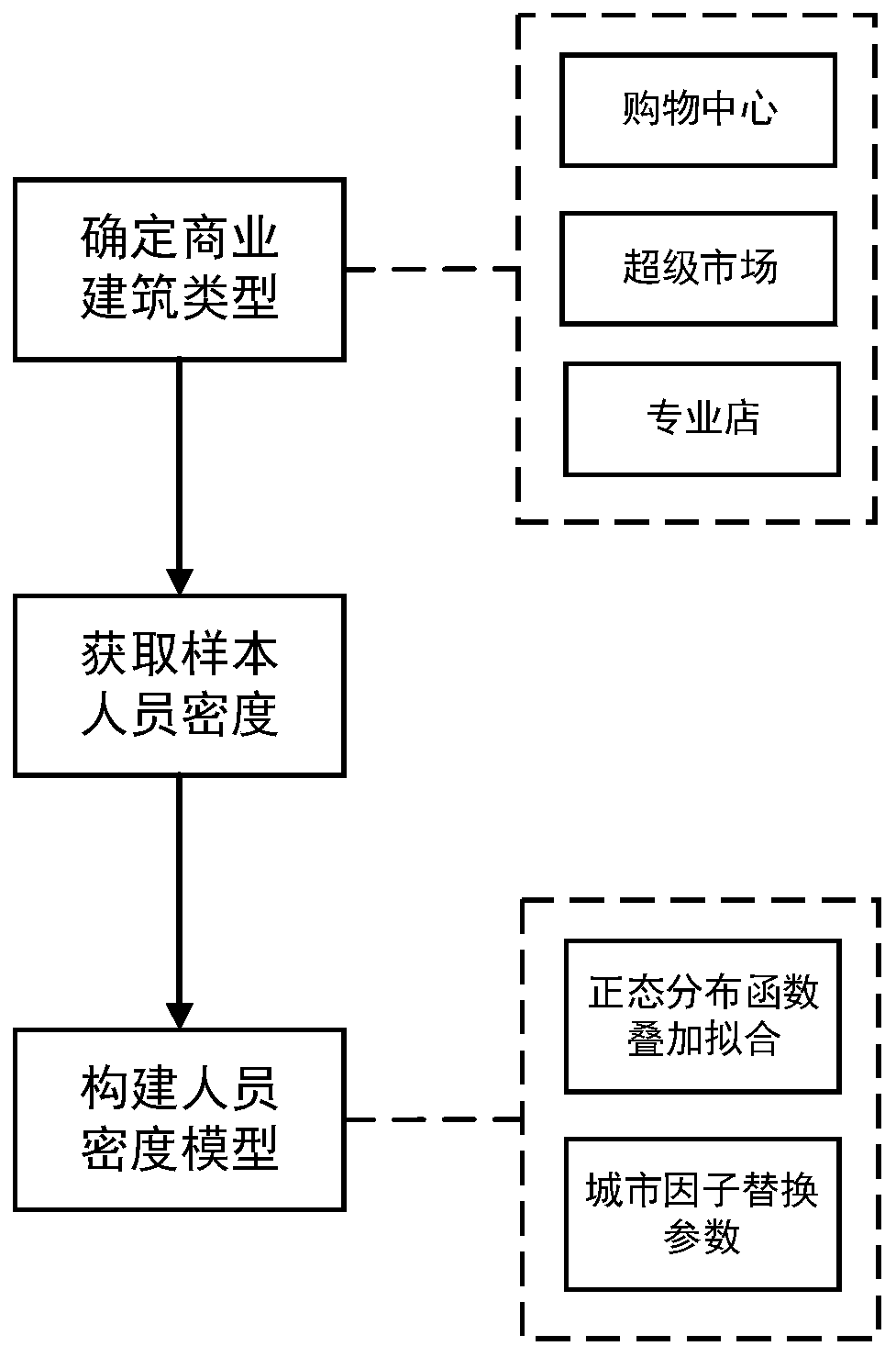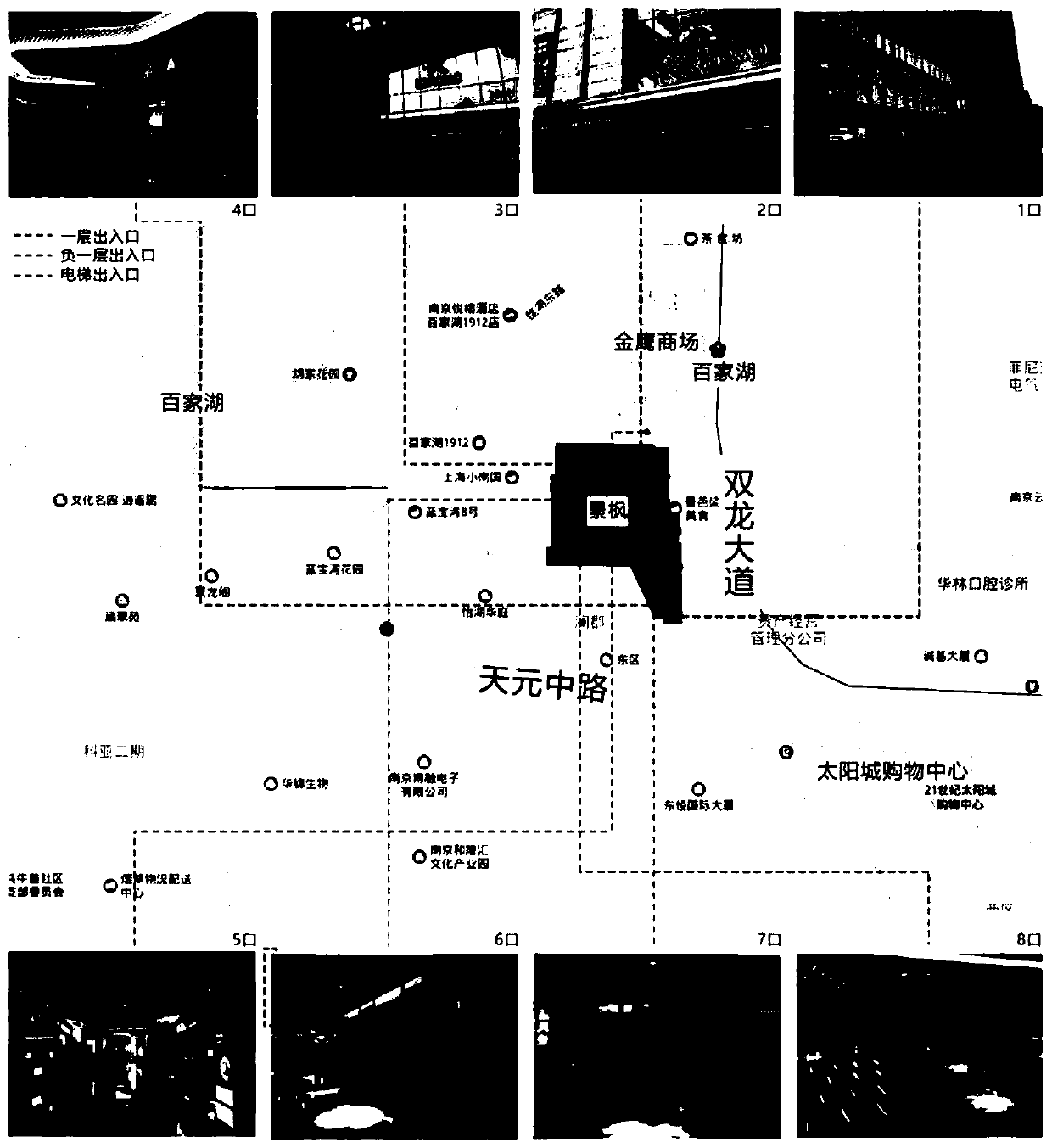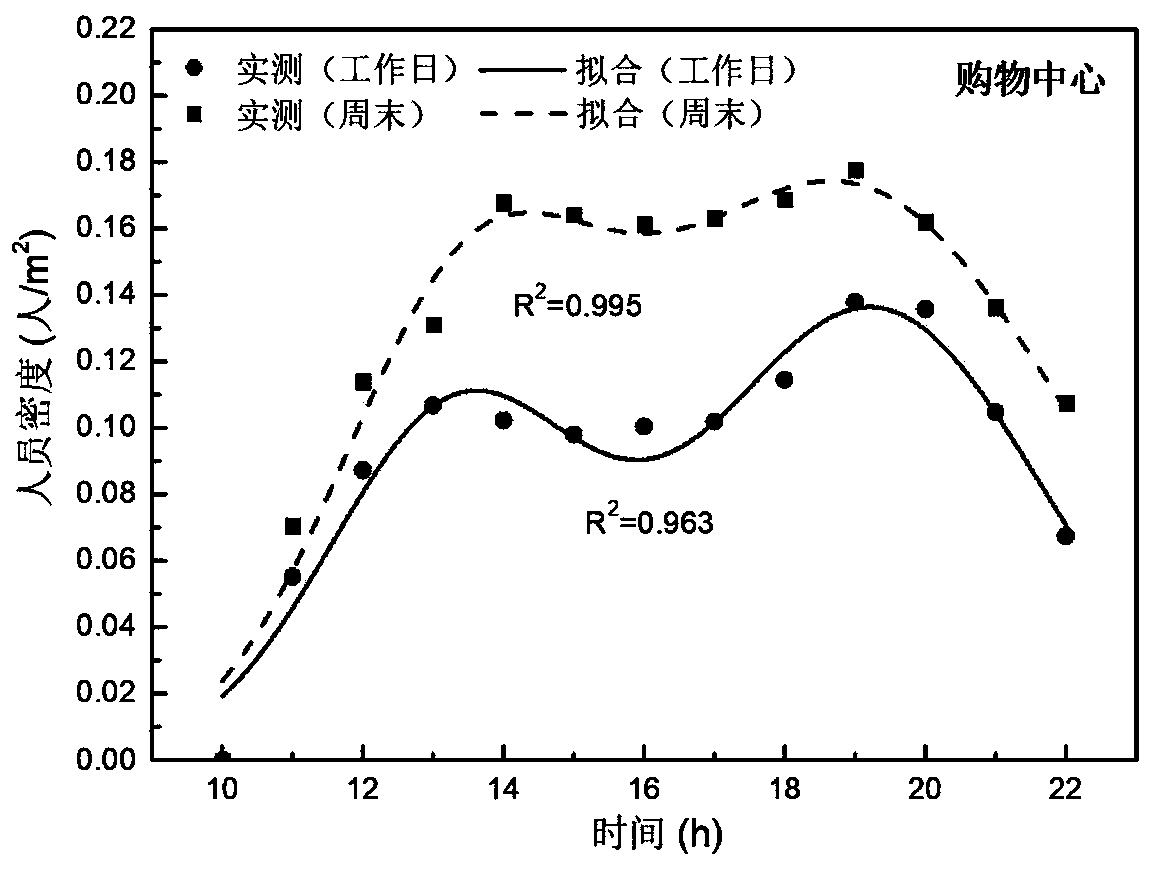Commercial building hourly personnel density prediction method
A forecasting method and personnel technology, applied in forecasting, instruments, data processing applications, etc., can solve the problem of low accuracy of energy consumption simulation, and achieve the effect of ensuring dynamics, improving accuracy, and ensuring differentiation
- Summary
- Abstract
- Description
- Claims
- Application Information
AI Technical Summary
Problems solved by technology
Method used
Image
Examples
Embodiment 1
[0056] like figure 1 A method for predicting the hourly occupancy density of a commercial building as shown includes the following steps:
[0057] Step 1: Determine the specific type of commercial building;
[0058] Step 2: Obtain the actual population density of typical commercial buildings;
[0059] Step 3: Build a population density model.
[0060] Among them, step 1: determine the specific type of commercial building;
[0061] According to the Code for Design of Store Buildings (JGJ48-2014), commercial buildings are divided into shopping malls, supermarkets, specialty stores, etc. (see Table 1 for specific explanations). Since the population density models of specific types of commercial buildings are different, it is not possible to establish a general population density model for commercial buildings, but to establish a population density model for each specific type of commercial buildings.
[0062] Table 1. Description of Commercial Building Classification
[0063...
Embodiment 2
[0084] In order to make the method of Embodiment 1 more intuitive and easy to understand, the establishment of a population density model in a shopping center is taken as an example for related explanations:
[0085] 1. Determine the specific type of commercial building. A shopping center is taken as a specific description object of the present invention.
[0086]2. Obtain the actual population density of typical commercial buildings. In order to ensure the representativeness of the research samples, four shopping centers scattered and not located in the same administrative area were selected for field research, including Dayang Department Store (Hongyang Plaza), Jingfeng (Jiangning), Forest Moore, and Deji Plaza. Each building is selected on weekdays and weekends, and investigators are arranged at each entrance and exit of each sample building to record the number of people entering and exiting hourly. Finally, calculate the hourly personnel density based on the statistical...
PUM
 Login to View More
Login to View More Abstract
Description
Claims
Application Information
 Login to View More
Login to View More - R&D
- Intellectual Property
- Life Sciences
- Materials
- Tech Scout
- Unparalleled Data Quality
- Higher Quality Content
- 60% Fewer Hallucinations
Browse by: Latest US Patents, China's latest patents, Technical Efficacy Thesaurus, Application Domain, Technology Topic, Popular Technical Reports.
© 2025 PatSnap. All rights reserved.Legal|Privacy policy|Modern Slavery Act Transparency Statement|Sitemap|About US| Contact US: help@patsnap.com



